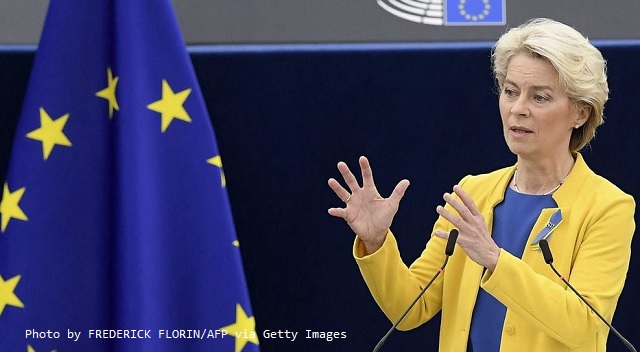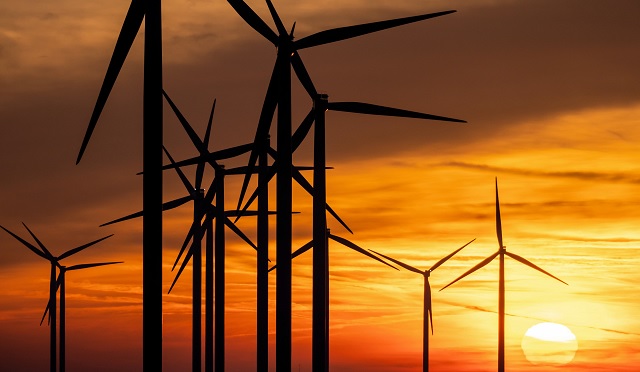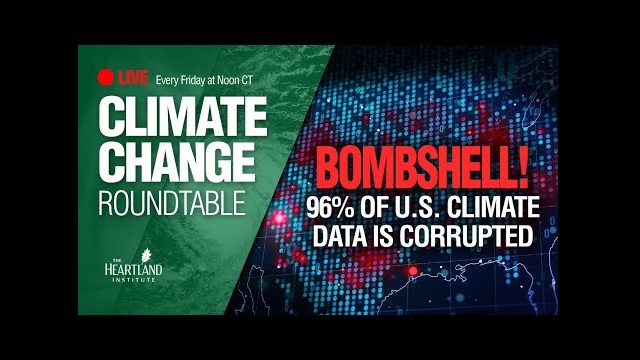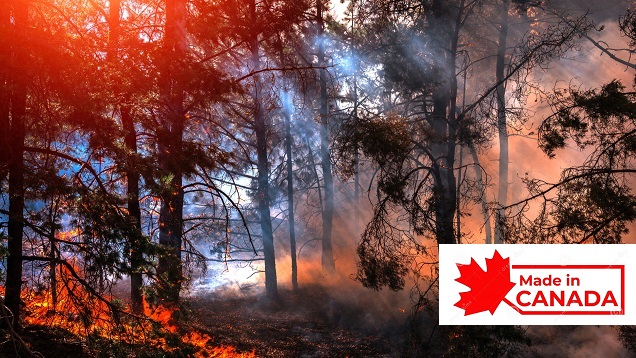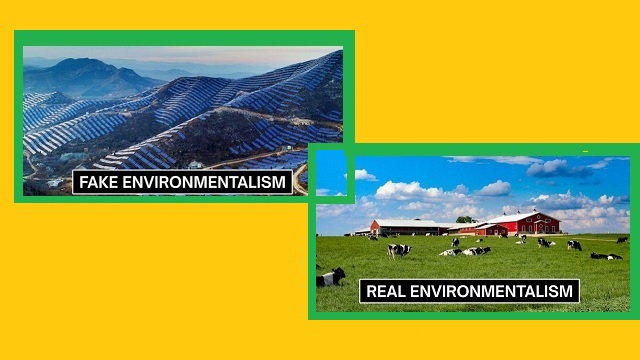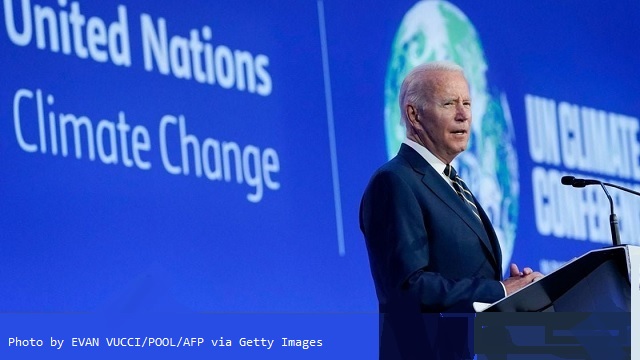
The Biden administration is pushing to give veto power over major Pentagon contracts to a group of climate activist groups that advocate for establishing “guardrails” on economic growth, according to a Daily Caller News Foundation investigation.
The administration proposed a rule in November that requires major contractors for the Department of Defense (DOD), NASA and Government Services Agency (GSA) to submit climate-related goals to a consortium of activist organizations, called the Science Based Targets initiative (SBTi), for validation. If the SBTi rejects the contractor’s plan to reduce emissions, the company would no longer be eligible to compete.
However, the groups behind the SBTi are part of the Global Commons Alliance, a climate activist network that seeks to limit economic development and set up international watchdogs to monitor climate pledges of governments and private companies, according to a DCNF review of the network’s activities. The Alliance’s components advocate for limits on consumption, redistribution of resources between rich and poor people and a more ambitious set of goals to mitigate perceived changes to the climate.
Additionally, scientists involved in the Alliance have argued for the need to limit Earth’s population to preserve the climate.
The Biden administration is “placing our defense needs in the hands of these people whose interests may not be in defense,” Dan Kish, a senior fellow at the Institute for Energy Research, told the DCNF.
“These seem to be offshoots of the interests of the World Economic Forum — people who consider themselves smarter and better and wealthier and more powerful than the rest of the subjects of the world, and seek to impose their will,” he added.
‘Playing God’: The Coalition Of Climate Orgs Behind The SBTi
In 2015, sustainability professionals from the World Resources Institute (WRI), World Wildlife Fund (WWF), CDP (formerly the Carbon Disclosure Project) and UN Global Compact came together after the Paris Climate Accords to find ways for corporations to set benchmarks and devise plans to meet the goal of net-zero carbon emissions by 2050, according to Technology Review. The SBTi emerged from the coalition, and is working on developing guidance for so-called science-based emissions reduction goals for various industries.
The groups behind the SBTi also created the Science Based Targets Network, or SBTN, to “[build] on the momentum of the [SBTi],” according to the group’s website, which lists the SBTi’s constitutive organizations as “among our core founding partners.” The SBTN helps companies and cities create and monitor targets, which it calls Science Based Targets for Nature, in a bid to preserve nature “in line with scientifically defined limits and on a socially equitable basis,” according to the group’s website.
However, the SBTN relies on research from the Earth Commission, an organization seeking to establish “guardrails” on human activity to protect the climate; both organizations operate under the umbrella of the Global Commons Alliance.
“The goal is to translate the scientific guardrails defined by the Earth Commission, into tangible science-based targets for nature, specifically tailored to cities and companies by the Science Based Targets Network,” the Earth Commission’s website reads.
In a February 2023 journal article, scientists from the Earth Commission stressed the importance of reducing “indirect drivers” of climate change, such as human population size and growth.
“Many of the factors causing global biodiversity decline are associated with economic growth and speculation,” the researchers wrote in the journal article. Achieving “justice” and a “nature-positive” society requires “reducing over-accumulation of capital” and associated excess production and consumption among wealthy countries.
Additionally, a November 2022 paper sponsored by the Earth Commission, which called for a “radical redistribution” of resources, found that if everyone on the planet had minimum access to life necessities, the planet’s climate disaster triggers would be violated by up to 26%. “Having ‘too little’ therefore results from others having ‘too much,’” the authors conclude.
In practical terms, states can even-out resources between rich and poor countries through “taxation, internalizing costs, overseas aid, universal basic incomes, voluntary limits on consumption, and education,” according to the scientists.
In May, the SBTN introduced new environmental targets, broadening their scope to include not only reducing greenhouse gas emissions but updating so-called “planetary boundaries” meant to restrain the scope of human economic activity to protect human, animal and plant habitats.
Myron Ebell, director of the Competitive Enterprise Institute’s Center for Energy and Environment, explained the concept of planetary boundaries to the DCNF: “We have far exceeded the ‘carrying capacity’ of the Earth.”
“So first, let’s figure out exactly what it is (for example, no more than one billion people), which can then be the basis for imposing ‘science-based’ policies to make people less numerous and a lot poorer.” Such policies would send the earth “back to the Stone Age,” he said.
“These people are basically playing God,” said Kish.
The Earth Commission and the SBTN overlap in terms of shared resources, founding partners and aims under the umbrella of the Global Commons Alliance, while the groups that founded both the SBTi and the SBTN are partners of the Alliance, their websites show. While the Biden administration’s rule only mentions the SBTi, experts suggest it opens channels for the other groups to influence how the Pentagon and other U.S. agencies decide which companies should receive government contracts.
“SBTN is a separate but related organization [to SBTi] focusing on SBTs beyond climate,” SBTN spokesperson Arabella Stickels told the DCNF.
“We shouldn’t be delegating the authority for what’s important for our national defense and our national defense contractors to some third party groups,” Kish told the DCNF.
‘Less Bang For Our Buck’
Under the Biden administration’s proposed rule, the SBTi will effectively have veto power over key Pentagon contracts.
According to the proposal, any company holding $50 million or more in contracts with the DOD, NASA or GSA must report all second and third-order greenhouse gas emissions generated by its operations. Two years after the rule goes into effect, they’ll also be required to submit a “science-based target” to the SBTi for validation.
If they fail their inspection, the SBTi will return the target and offer the company a second chance to submit a more appropriate emissions reduction target.
In practical terms, that means groups involved in the SBTi are “establishing not only industrial policy, but military policy,” Kish told the DCNF. “And that means that we’ll get less bang for our buck.”
The SBTi “appears to be a cabal and is certainly a racket,” Ebell said.
The DOD awarded roughly $383 billion in contract spending in 2021, according to analysis firm Deltek; however, the Pentagon’s largest defense contractors aren’t featured in the SBTi dashboard yet, meaning they haven’t yet committed to the initiative.
The #SafeAndJust #EarthSystemBoundaries are finally live, in @Nature: https://t.co/6D4yEjMGj1
For 4+ years, the Earth Commission @SafeJustPlanet has worked to quantify the conditions needed for the Earth and everything that lives on it to thrive.
Read on 🧵👇
— Global Commons Alliance (@globalcommonshq) May 31, 2023
The Pentagon did not say whether or how the department would work with the SBTN, though it maintains that combating climate change is a top priority.
“All requirements are pre-decisional as the rule proposal is pending,” Kelly Flynn, a DOD spokesperson, told the DCNF. “We have nothing further to provide at this time beyond what is stated in the proposed rule.”
Empowering the SBTi to make decisions regarding key Pentagon contracts could undermine Congress’ authority to allocate funds for national defense, according to Kish.
“Congress is one that appropriates and allocates the money for the defense of the nation, which is one of our premier reasons for being in the social contract that we have under the Constitution,” said Kish. Yet, the Biden administration is seeking “to offshore this to some people who have some grand ideas who are then going to impose their will on our defense contractors,” Kish said.
The White House did not respond to the DCNF’s requests for comment.
AUTHOR
Investigative reporter and Pentagon correspondent.
RELATED ARTICLE: ‘Complete Collapse’: Here’s How ESG Destroyed One Nation’s Economy
EDITORS NOTE: This Daily Caller column is republished with permission. ©All rights reserved.
All content created by the Daily Caller News Foundation, an independent and nonpartisan newswire service, is available without charge to any legitimate news publisher that can provide a large audience. All republished articles must include our logo, our reporter’s byline and their DCNF affiliation. For any questions about our guidelines or partnering with us, please contact licensing@dailycallernewsfoundation.org.


